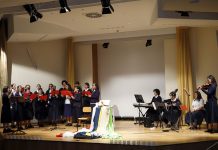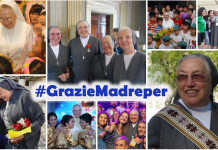Rome (Italy). In line with the Synod on: Young People, Faith, and Vocational Discernment (Cf. Working Document nos. 213-214), in the month of June, we share the ninth study on the journey of accompaniment in the youth of Saints, Blesseds, Venerables, and Servants of God.
The vocational path of Maddalena Morano
Maddalena passed her infancy in the company of her inseparable brother Peter, two years older than she. This fraternal rapport gifted her with knowledge and familiarity with the male mind. In fact, she challenged the boys to race and she won; thus they called her the ringleader and the soldier. Maddalena possessed a lively, strong, energetic personality, able to blossom always and everywhere, as it appears on the coat of arms of the original house.
She learned from her parents that the story of true love is shown in renunciation, in sacrifice for a greater gift. Love always passes through the path of Kenosis, of humility. Otherwise, it could involuntarily hide some crumbs of self-love and of self-affirmation. Her father Francis, for the love of her mother, had chosen poverty over nobility and family ties.
This experience made her more sensitive to the choice for Jesus who for love made Himself poor to take on the human condition (Cf. Phil 2) and she would summarize her ideal with, “Cost what it may”. From her childhood, the hand of God accompanied her and formed her. The deaths of her father and brother Francis in one month threw the family into difficult conditions. Maddalena could no longer attend school because she had to dedicate herself to knitting. In fact, her mother went to the market to sell whatever she made with her activity in order to live. Sometimes while she worked, Maddalena would pause a while and take the catechism from her apron pocket. She would read and meditate. However, suffering had marked her. She became weak and no longer smiled.
Fr. Francesco Pangella, a priest cousin of her mother, noticed this. He spoke with her mother, assuring her of some financial help for the family, which allowed her to return to school. He also gave her a piano and her Italian lessons. This was a concrete sign for her that Providence takes care of the neediest. The enterprising Maddalena learned to trust and to let herself be taken care of by God through unexpected mediations and to be formed by Him. When she came home from school, she helped her mother in the housework with a great sense of responsibility.
It was her teacher, Rose Girola, who intuited in her a special educational talent and helped her to cultivate it by placing near her at school the youngest students and those who had need of care and of attention. Maddalena knew how to animate them, correct them, and educate them with patience. The events she had experienced and the helps she had received led her to discover in seed that God manifests Himself as God in dependent entrustment and not only in human resourcefulness. In 1857, she received her First Holy Communion. It was a decisive encounter that marked her entire life. With another two friends, among whom Olympia Stura, she decided to do penance, like the great martyrs spoken of in the ascetical manuals of her time with St. Louis as a reference. One of the mothers of the girls noticed this and told the Pastor, who spoke to her of the martyrdom of daily life with its crosses that are not chosen but are accepted. In June of this same year, another brother died and Maddalena continued her Calvary alongside her suffering mother. In the autumn of that same year, Don Bosco was passing through Buttigliera with a group of his boys. Climbing up a tree with her brother Peter, Maddalena saw him for the first time and his name remained like magic. Her commitment to spiritual life made her more reflective and desirous of doing good especially to the little ones. Thus, the road opened.
Fr. Vaccarino, her Pastor at Buttigliera, wanted to open a parish nursery school and in 1862, Maddalena who was not yet fifteen years old, was hired as a good, genial, smiling, benevolent, and demanding teacher. In 1864, after having obtained her teaching diploma, she felt that the Lord was calling her to religious life. Yet at the same time, she felt strongly the duty to help her family. After having spoken with the Pastor, she kept hidden her secret with God as she waited for more mature and serene times.
In 1866, she was hired as a teacher at Montalto, in a municipal school for boys. Far from home, with her heart alongside the suffering of her very tried family, she overcame every difficulty with prayer, daily Mass, the visit to the Eucharist, and the Via Crucis, a devotion she acquired from her mother after the death of her father and through which she re-read her suffered human existence.
In 1868, a new Pastor arrived, Fr. Ferdinand Trinchieri, who became her spiritual director. Despite being more esteemed in the town than the mayor and the parish priest, Maddalena was very docile in letting herself be accompanied. In 1877, after more than ten years of work and saving, she was able to fulfill her mother’s desire: to live in a house with a little land. At thirty years of age she could thus accomplish her mother’s dream and her own.




















